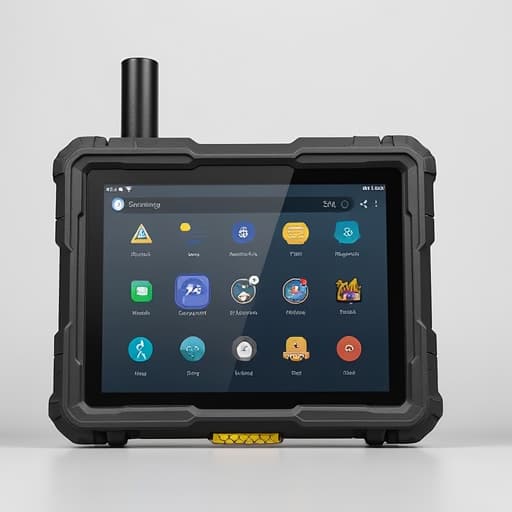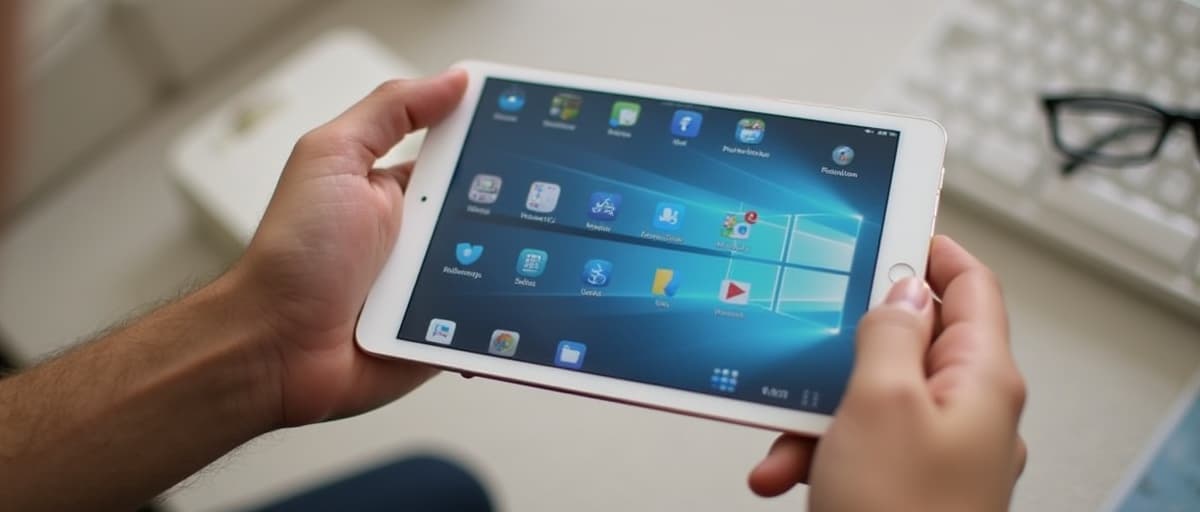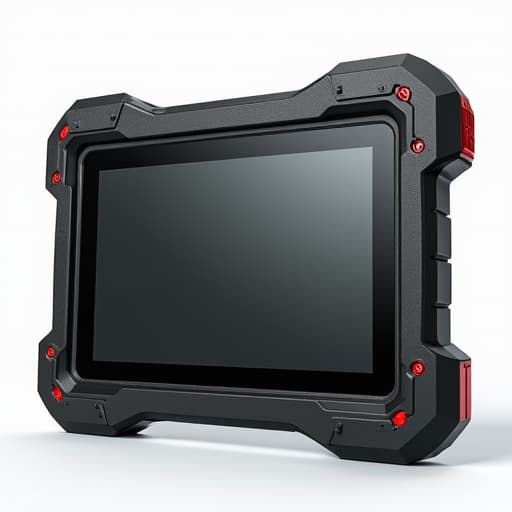Thinking about buying a new tablet but worried about drops, spills, or dust? You’ve probably stumbled upon the term “rugged tablet,” and it’s a game-changer. While a standard tablet is perfect for the couch or a coffee shop, a rugged tablet is built to survive the real world. Let’s break down the key differences and help you figure out which one is right for you.

What’s the Difference Between a Rugged Tablet and a Standard Tablet?
The main difference comes down to one thing: durability. A standard tablet, like an iPad or a Samsung Galaxy Tab, is designed for everyday use in a controlled environment. They’re sleek and powerful but are not meant to be dropped on concrete or used in the rain.
A rugged tablet, on the other hand, is engineered from the ground up to withstand extreme conditions. They are often used in industries like construction, manufacturing, logistics, and field service. Here’s a quick comparison:
| Feature | Standard Tablet | Rugged Tablet |
| Build & Materials | Sleek, thin glass and aluminum. | Thick, reinforced casings with rubber bumpers and hardened plastics. |
| Drop Protection | Minimal. A drop from a few feet can shatter the screen or damage internal components. | Drop-proof from heights of 4 to 6 feet or more onto concrete. |
| Water & Dust | Minimal protection (e.g., splashing water). Not designed for submersion. | Waterproof and dust-proof, often capable of being submerged or hosed down. |
| Screen | Standard glass, prone to cracking. | Glove-friendly and daylight-readable screens made with strengthened glass like Gorilla Glass. |
| Temperature | Operates within a limited temperature range. | Designed to function in extreme heat and cold. |
| Connectivity | Wi-Fi and cellular. | Often includes extra features like GPS, barcode scanners, and ports for specialized equipment. |
| Battery Life | Decent battery life, but a full day’s work may require charging. | Extended battery life with some models featuring hot-swappable batteries for continuous use. |
Rugged tablets aren’t just a regular tablet in a beefy case; they are a completely different class of device.

Certifications: The Proof of Toughness
To be considered a true rugged tablet, a device must pass a series of rigorous tests and earn specific certifications. These aren’t just marketing buzzwords—they are the standards that prove a tablet’s durability.
- IP Ratings (Ingress Protection): This is one of the most common certifications. The “IP” is followed by two numbers. The first number rates its resistance to solids (like dust), and the second rates its resistance to liquids (like water). For example, an IP68 rating means the tablet is completely protected from dust and can be submerged in water up to 1.5 meters for 30 minutes. An IP65 rating means it’s dust-tight and can handle jets of water.
- MIL-STD-810G (or 810H): This is a U.S. military standard that tests a device against a range of environmental stressors, including drops, vibrations, shocks, extreme temperatures, and humidity. When a manufacturer claims a tablet is “drop-proof,” they are usually referring to passing this test.
So, are robust tablets drop-proof? Yes, but only if they have these specific certifications. They’re not indestructible, but they are built to survive drops that would obliterate a standard tablet.
How to Choose a Rugged Tablet
Choosing the right rugged tablet depends on your specific needs. Here are the most important things to consider:
- Environment: Will you be in dusty, wet, or extremely hot or cold conditions? The environment will determine the IP rating and temperature range you need.
- Drop Height: How high is a typical drop in your work? A warehouse worker on a forklift might need a 6-foot drop rating, while a delivery driver might only need a 4-foot rating.
- Battery Life: Do you need it to last an entire 8-12 hour shift, or longer? Look for models with hot-swappable batteries if you need continuous uptime.
- Connectivity & Features: Do you need a barcode scanner, RFID reader, or specific ports for other equipment?
- Operating System: Do you prefer Windows, Android, or iOS? Most rugged tablets run on Windows or Android, as they are more open for customization and enterprise applications. A great example of a flexible rugged tablet is the Waysion Q777.
Beyond Durability: Other Tablet Questions
What is better than a tablet?
It really depends on what you need. A laptop is better for heavy-duty tasks like video editing, coding, or detailed document creation. A smartphone is better for quick, on-the-go communication and tasks. A rugged tablet is better for field work where you need the portability of a tablet with the durability of a tank.
What is the most powerful tab?
This title is constantly changing, but for pure processing power, the Apple iPad Pro and the high-end Samsung Galaxy Tab Ultra series are usually at the top. For a rugged tablet, power is often balanced with durability, so a high-end consumer tablet will usually outperform it in pure speed.
What is the most powerful Amazon tablet?
Currently, the most powerful Amazon tablet is the Fire Max 11. While it’s great for media consumption and light tasks, it won’t compete with the raw power of an iPad or a Samsung tablet.

What is the best iPad for tradies?
While no iPad is truly “rugged,” the most durable options are the iPad Air or the iPad (10th Gen). However, the most crucial part is a heavy-duty, impact-resistant case from a brand like OtterBox or Lifeproof. For a true tradie, though, a purpose-built rugged tablet is a far better investment as it’s designed to withstand the daily grind.
What tablet lasts the longest?
If you’re asking about battery life, some modern tablets can last 10-12 hours on a single charge. If you’re asking about overall lifespan and durability, the answer is a rugged tablet by a landslide. They are built to last for years, often in harsh conditions that would destroy multiple standard tablets.

评论
发表评论